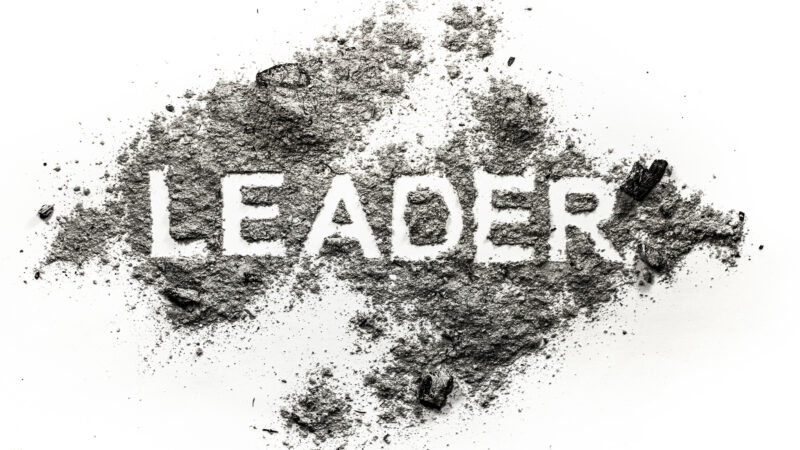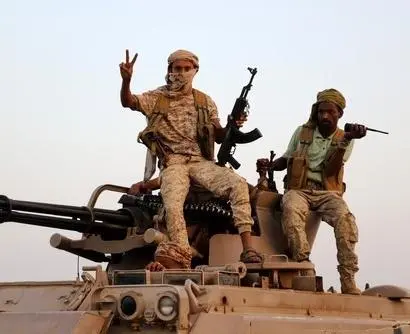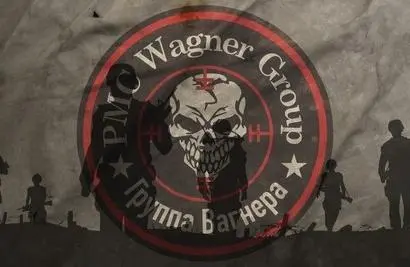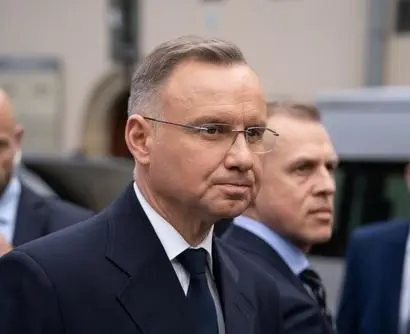Abstract: The war in Ukraine highlights the importance of the human factor in the effective operation of armed forces. General Mieczysław Bieniek observed on Polish Radio 24 that “the advantages of the Ukrainian army include the way of conducting military operations, its training and Western equipment at its disposal. Russians have an overwhelming amount of equipment, yet all that heavy machinery lacks a command system, interoperability, and, first and foremost, the human factor”.[1] This experienced commander claims that the most significant advantage of the Ukrainian army is “taking decisions/by commanders they do have this tactical independence at the company, battalion and battle group level, (…)”.[2] Further on, he emphasises that Russians lack “… also the command system, interoperability, and, first and foremost, the human factor”.[3] Leadership has been the foundation of armed organisations since the very beginning. In the 6th century BC, the Chinese general and philosopher Sun Tzu claimed, “Leadership is a matter of intelligence, trustworthiness, humaneness, courage, and authority”.[4] Leadership quality has been and still often is the cause of victory. A good commander should, first and foremost, be a leader with authority and respect among their personnel.
Problem statement: How to prepare future military personnel for new, hitherto unknown challenges?
Bottom-line-up-front: What command and leadership qualifications, understood as the ability to lead human resources, should a commander at the head of such an organisation have? If the primary goal of command is to create a well-coordinated and properly trained combat team, how should the commander influence the behaviour of subordinates to achieve this goal? Certain command and leadership qualifications—understood as the ability to lead human resources—are crucial for an effective commander to lead any military structure or organisation. Teaching future commander-leaders vital interpersonal, command, and leadership qualifications combined with advanced military knowledge will have an indispensable influence on subordinates’ behaviour to create a well-coordinated and properly trained combat team.
So what?: Through conclusions drawn from contemporary conflicts and forecasts about their nature in the future, one can characterise the necessary qualities, abilities and skills of the future commander so that they can effectively lead their force in a future conflict. These skills and abilities comprehend high interpersonal effectiveness qualities within the social relationships as well as the self-management abilities being reflected within interpersonal skills allowing for effective fulfilment of one’s intentions and tasks assigned in social interactions and having a crucial impact on managing others as both a commander and leader. It can also be assumed that educating and shaping future leaders must be oriented towards flexibility and adaptability in the context of modern battlefield dynamics.
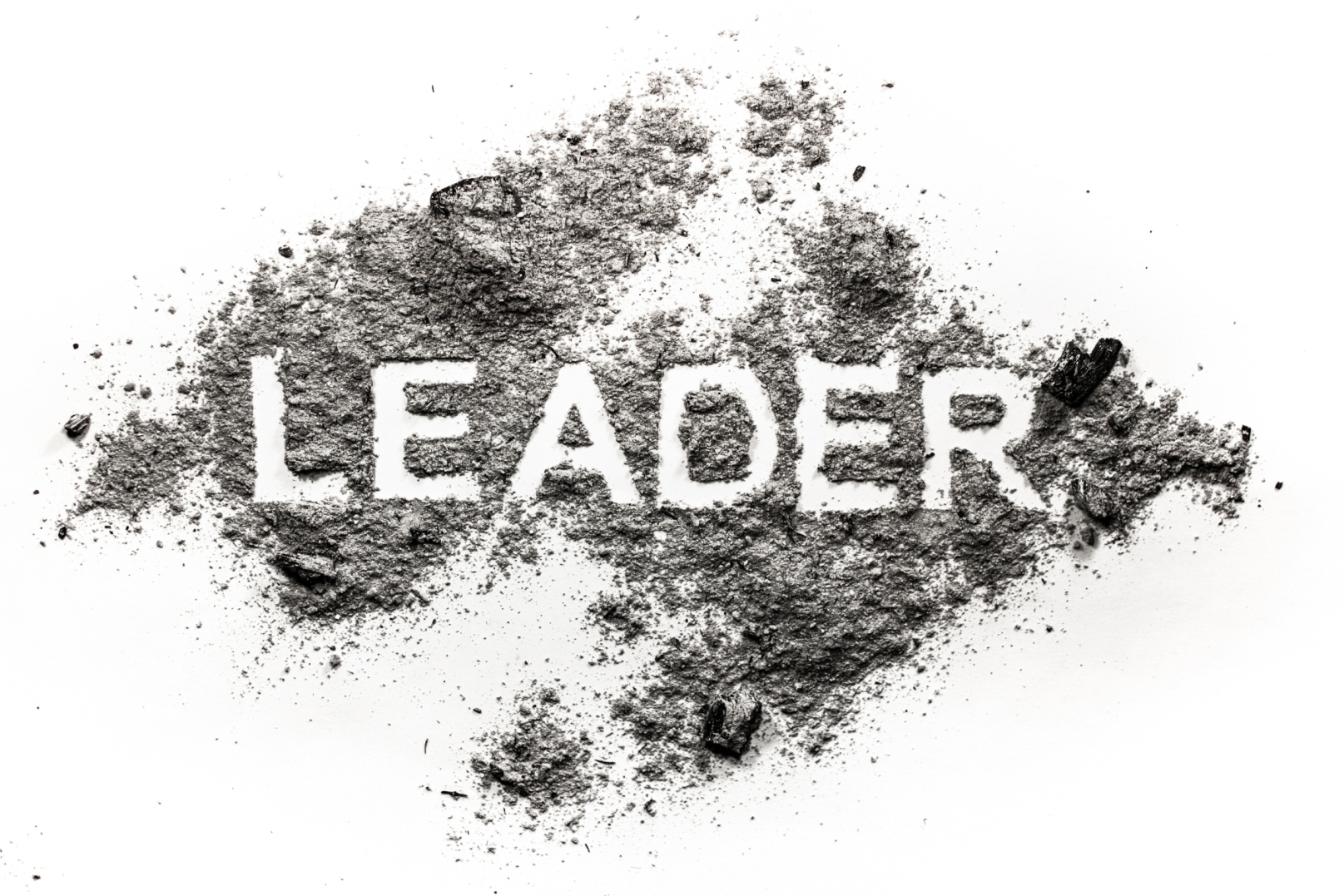
Source: shutterstock.com/Azer Mess
Technology and Wars
Over the centuries, military analysts have sought answers to the same questions. What will future wars look like? What challenges will future armed forces have to face? What will future battles look like? How will technology change the battlefield, the types of wars, and thus their participants? How to prepare the future commanders so that they not only organise training activities in a military unit (or sub-unit) in times of peace but also, perhaps primarily, efficiently manage troops in war.
How will technology change the battlefield, the types of wars, and thus their participants?
These and similar questions remain unanswered. It is only possible to determine the likelihood of the occurrence of conflicts and their course and potential consequences. Given this context, one can constantly search for a model which would be sufficiently adequate for such a concept of war.
Wars in the First Half of the 20th Century
War has been present in all centuries and civilisations.[5] Nevertheless, a commonly recognised definition does not exist. According to the most recently established definitions, war is not a purely military phenomenon but a total one encompassing internal and foreign policy, economy, and military operations.5 It follows that the definition of war includes social, historical, and class phenomena aimed at settling disputes and achieving political goals by resorting to violence. Therefore, war can be seen as not only a combat activity understood as a military operation but also a legal situation in which the existence of war is recognised.[6]
Future war is likely to be a highly complex, interdependent, and dynamic phenomenon that requires a systemic and comprehensive approach to analysis and assessment. Thus, its participants, driven by conflicting goals, actions, and motivations, should be determined. By applying the above-described criterion and relying on experience gained during previous wars and conflicts which occurred in recent years, as well as views expressed by political scientists and military theorists and students of war, one can suppose that in the future, the following types of war will be waged:
- asymmetric wars waged between state and non-state entities;
- inter-state wars in which states will participate;
- inter-civilisation war, especially on the border between civilisations[7] (the so-called civilisation wars).[8]
Considering the constant evolution of the structure, shape, and form of wars, one cannot exclude the emergence of other types of war whose properties are difficult to identify clearly. The literature includes classifications of future wars depending on their structure, shape, or form, such as the concept of Hybrid Wars. The construct first appeared in the American military strategy and was adopted by American analysts in military operations conducted in Afghanistan and Iraq.[9] The term was first used by Major W.J. Nemeth while describing the Russian-Chechen war. In his opinion, a hybrid war is a diverse way of perceiving a military force whose organisation reflects social and economic development and binding social norms with the simultaneous employment of modern technology in performing tactical and strategic operations.[10]
Considering the constant evolution of the structure, shape, and form of wars, one cannot exclude the emergence of other types of war whose properties are difficult to identify clearly.
Concerning the characteristics of hybrid wars, there are several definitions among military theorists – Robert G. Walker defines hybrid warfare as a combination of rules typical for conventional war and special operations,[11] whereas Colonel John McCuen understands it as a combination of symmetric and asymmetric warfare.[12] Hybridisation can concern both the belligerent (state, non-state entity, irregular military group) and the area of a conflict (especially a battlefield), the background and nature of war (the conflict environment). It results primarily from the spatial and temporal coexistence of several generations of war, which intersect, permeate, and confront each other on the battlefield or in operations other than war.[13] Based on these definitions, a hybrid war can be considered a combination of tactical operations, terrorism, and crime, devoid of social norms and conducted through conventional and non-conventional means to reach objectives.
Referring to asymmetric wars again, a uniform and widely recognised definition of this warfare type has not been established. In Polish research, this concept is usually defined as actions “aimed at circumventing the enemy or undermining the source of his power by taking advantage of his weaknesses and employing strategies significantly differing from standard operating procedures used by the enemy”.[14] Prof. Herfried Münkler believes that asymmetric wars will be given great significance in the 21st century.[15] Asymmetrisation of war is a clash of fundamentally different military and political strategies, which cannot be limited or regulated by international war. It entails moving war zones, redefining the means of conducting wars and employing new resources. The increasingly spreading globalisation exerts a substantial influence on asymmetric wars.
Asymmetrisation of war is a clash of fundamentally different military and political strategies, which cannot be limited or regulated by international war. It entails moving war zones, redefining the means of conducting wars and employing new resources.
As a result, a nation-state or a group of states may face non-state transnational opponents (frequently not officially recognised and criminal), such as business corporations, paramilitary groups, terrorist organisations, organised crime, drug cartels, religious movements, mercenaries or parts of state armies. Consequently, a visible asymmetry between belligerents is created. It concerns not only adversaries’ military or technological capabilities, wealth, or development stage but also culture, ideology, views, identity, or faith. Therefore, the mode of operation typical to non-state entities is the use of violence against civilian populations so that considerable destruction is caused with minimum material resources. Such operations will be conducted in a scattered and fragmented way.
In asymmetric wars, identifying the enemy or choosing the correct method of operation can be difficult and sometimes even impossible. It is also challenging to determine the potential theatre of operation or distinguish a non-combatant from a guerrilla or insurgent. The beginning and end of an asymmetric war cannot be unambiguously established, as it might occur during a conventional war, where the political aspect is crucial for defining, e.g., the temporality of the conflict. As a result, the structures of asymmetric wars are vague and blurred. Therefore, one is justified to claim that asymmetric wars have acquired a new shape and left the battlefield.[16]
Asymmetric wars can be waged on different scales and dimensions, including the state, regional, and global scales. It becomes apparent that well-equipped armed forces are often ineffective when confronted with a less numerous and poorly equipped enemy who fights ruthlessly, taking advantage of surprise and attacking not direct targets like armed forces but indirect ones like the weak, vulnerable and open democratic society.[17]
Nowadays, factors such as access to up-to-date and reliable information, the use of manoeuvre and efficient command, surveillance and destruction systems are much more important than creating a material advantage, expressed in the number of soldiers, tanks or cannons. Therefore, it can be supposed that future wars will be waged by independent combat groups (task forces) capable of performing manoeuvrable, defensive and offensive operations. Their composition will be strictly adjusted to the situation and specific task. Those forces will not be numerous, but they will be active, mobile, flexible, and well-adaptable to changing environmental conditions. They will be connected using fast and safe IT networks allowing for efficient command and a high level of battlefield knowledge.
Describing the Russia-Ukraine war, General M. Bieniek points out differences in conducting this war by both belligerents. It can be claimed that the Russian Forces largely conduct armed operations, which still resemble a mass war. Conversely, Ukrainian Forces often conduct operations typical of the diffused war. General Bieniek notes that Ukrainian soldiers “see and hear more and farther than the Russian side. Their further advantage is taking decisions in small tactical groups – they do have this tactical independence at the company, battalion and battle group level (…)”.[18]
Ukrainian Forces often conduct operations typical of the diffused war. They see and hear more and farther than the Russian side.
Considering the above, it is impossible to rule out the participation of large armies and the existence of a linear armed conflict. Conventional wars still occur in the contemporary world, and presently, their characteristics are still (and should be in the future) included in all scenarios of organised military exercises. However, there is a lack of forward-looking scenarios, including trends defined in the security environment and the possibility of verifying capabilities and procedures in the face of new challenges. Such a scenario, complemented by determining the future nature of conflict, should be a primary challenge for strategists and curricula designers in military academies.
Challenges for Educating Future Leaders
In the English language, the words: lead, leader, and leadership derive from the Old English word lǣdan, which denotes a “path” or “road”.[19] The verb leaden means “to travel”. It follows that a leader is a person who walks in front guiding their travel companions. Thus, a leader can be perceived as a helmsman. A company can have all the possible advantages (enormous financial resources or ultra-modern technology). Yet, if its leadership is weak, all those values perish. If an organisation fails at the leadership level, then the organisation as a whole will fail.[20]
The quality of deliberations on the nature of leadership is influenced by multi-contextual social transformations which manifest themselves in the permanent creation of contemporary society, the nature of new qualitative changes in relations between globality and locality, society and an individual, an organisation and individual, and their interdependencies.[21]
Systematic attempts to classify leadership concepts and theories identify different types of leadership and reveal structural characteristics of leaders’ personalities. B.M. Bass observes that there are three ways to explain the phenomenon of “becoming” a leader, they include: the Trait Theory (chosen personality traits may lead people naturally into leadership roles); the Great Events Theory (following a crisis or another life-changing event, an ordinary person can reveal their leadership qualities while adapting themself to the new situation); and the Transformational or Process Leadership Theory (people can decide if they are willing to become leaders and develop leadership skills).[22]
M.J. Michalak states that today the Transformational or Process Leadership Theory is the most widely accepted of the three. This has resulted in increasing theoretical and research efforts aimed at examining transformational leadership, whose potential reflects itself in the individual’s proactive behaviour and influence on the cultural context and changing the environment. These approaches “emphasise mutual relations between a leader, his subordinates and situation, (…) the effectiveness of leadership is dependent on such factors as a leader’s personality, the values he champions, his experience, expectations and behaviour as well as subordinates’ expectations, their behaviour, task requirements and organisational culture”.[23]
Contemporary organisations, institutions and companies make future leaders face more demanding challenges. The old prototype of an authoritarian omniscient leader is being replaced with the new concept of a leader distinguished by hard technical skills and several non-technical soft ones.[24] Today, a leader perceived as a sensitive cultural architect is expected to foster acquiring knowledge within an organisation and prepare it for functioning in modified conditions. Forging relations between organisation members instead of only competing for power is becoming the primary objective of contemporary leadership.[25]
Contemporary organisations, institutions and companies make future leaders face more demanding challenges. The old prototype of an authoritarian omniscient leader is being replaced with the new concept of a leader distinguished by hard technical skills and several non-technical soft ones.
Considering that, the process of educating and shaping future commanders, which presently involves preparation in terms of hard skills—technical competencies connected with military expertise and leadership skills, which are a precondition for becoming a commander — should be complemented with soft skills (personal and social).[26] Soft skills enable leaders to achieve “hard” results. It may seem that the most pronounced benefits of soft skills are hard to quantify precisely. Even if the nature of many social competencies, such as leadership, exerting influence or forging trust-based relations, remains elusive, they merit our interest and consideration. Interpersonal skills—often considered competencies of the modern leader — are vital professional skills that help every employee, especially the leader, feel at ease in any organisation and in many different situations, including those commonly faced while performing military tasks. Soft skills are also connected with knowledge, abilities, and attitudes, ensuring efficient performance. However, compared to hard skills, they are indispensable for this performance in many different contexts, professional roles (e.g., commander-leader of tomorrow), and in various posts. Soft skills allow for flexibility and adaptability in a multitude of duties and assigned tasks. Soft skills comprise an overall capability ready to be applied in various situations.[27]
From the functional standpoint, soft skills ensure effective self-management (personal skills) and high interpersonal effectiveness (social skills). Soft skills are the foundation of every person’s capability. They are essential for a leader preparing subordinates for difficult and dangerous operations because the lack of self-management and social skills often restricts or even renders successful performance impossible.
From the functional standpoint, soft skills ensure effective self-management and high interpersonal effectiveness.
At this point, it is worth emphasising that the good manager, leader, or teacher should effectively, actively, and flexibly manage their soft skills depending on the conditions and circumstances of performance. To be more precise, a person should either be able to capitalise on a given soft skill when necessary or put aside a skill whose use might prove ineffective in a particular situation. The flexibility provided by capitalising on one’s soft skills (called meta-competence[28]) is increasingly valued and systematically developed by excellent current managers, leaders, and teachers.
At this point, it is worth quoting K. Obłój, who notes that “employee’s skills are the constituent part of an organisation’s skills”, while …. “each company is ultimately a cumulative knowledge possessed by former and current employees”[29] – as well as their experience and attitudes. Once again, it should be emphasised that people become good leaders. A leader is not born a leader–Field Marshal Gen. Bill Slim noted that “Leaders are more often made than they are born. You all have leadership in you. Develop it by thought training and by practice”[30]. In other words, being a leader is a matter of “becoming one”, not a matter of fate, negligence, or pure chance. Further to this, A. Jago observes explicitly that “only if you have a desire and willpower can you become an effective leader”. Good leaders develop themselves through a life-long process of self-study, learning, training and experience. Good leaders constantly work and learn to improve their leadership skills; they do not rest on their laurels”.[31] At this point, one can risk a statement that leadership is everything an individual does to lead effectively.[32]
Thus, it seems justified to claim that natural-born leaders are rare commodities. It is more reasonable to conclude that leadership can be learned within a well-developed teaching and training process dedicated to preparing future commanders-leaders of tomorrow that would be conducted in authorised military organisations. Military service is a specific type of activity. It is inextricably connected with various demanding requirements (general and specialised), which often demand that personnel and their commanders perform effectively in difficult and dangerous situations. In such cases, dialogue and the free flow of information are often hampered. Therefore, there is a need in the military environment — especially in aviation — to develop relationship dialogues, both symmetrical and partnership relationships, instead of asymmetric relations, i.e., only official and formal ones, between a superior and subordinate. The necessity of creating properly established relationships, particularly in military aviation, stems from a solid core of cooperation between pilots within a multi-crew environment of a transport aircraft or in operations between a fighter controller and fighter pilot where symmetrical partnership is consistently enabled by dialogue and actions absent the features of reporting lines or traditional military subordination. This cooperation is exemplified by the Polish Air Force saying, “the ranks do not fly” in other words, it does not matter if one crew member is a general and the other a cadet—they both have the same value as crew members and have the equal, symmetrical importance. Concerning different military branches and actions performed by the person operating any other advanced equipment, these actions are often a creative, collaborative, and, above all—a team process.[33] However, no team will effectively function without a good leader who is prepared to make decisions and successfully work with a team in standard and static situations and difficult and dangerous ones. Such skills can be acquired only in a military environment distinguished by an appropriate organisational culture that generates conditions for constant learning, training, and professional development of commanders-leaders of tomorrow.
Military service is a specific type of activity. It is inextricably connected with various demanding requirements, which often demand that personnel and their commanders perform effectively in difficult and dangerous situations.
The relationship between employee attitudes and organisational culture is complex and multi-dimensional. Therefore, its power and nature are conditioned by many indirect factors.[34] In the case of the military environment, it is critical to deliberate on the influence exerted by organisational culture. The military milieu is highly aware of such demands; however, it cannot sufficiently resist the pressure exerted by the conservative system (in opinions expressed, e.g., by air force personnel for a few years[35]). Because the military has to face the challenges posed by the modern battlefield, it can be claimed that personnel and their commanders are prepared to perform in conditions dominated by situations that generate stress. Preparing for such situations requires an environment imbued with a specific organisational culture. It seems that the most appropriate would be the strong organisational culture type found in most of the NATO air forces. A strong organisational culture is defined as a distinctive connection between fundamental principles and values, the whole structure in which official rules are complemented with unwritten standards, high employee skills, their involvement, a sense of worthiness, pride, and exceptionality associated with an occupied position and performed tasks, the crucial importance of social and communicative skills, huge responsibility, a feeling of autonomy, and treating personnel with respect and the profound significance of authority.[36]
A strong organisational culture is defined as a distinctive connection between fundamental principles and values, the whole structure in which official rules are complemented with unwritten standards, high employee skills, their involvement, a sense of worthiness, pride, and exceptionality associated with an occupied position and performed tasks, the crucial importance of social and communicative skills, huge responsibility, a feeling of autonomy, and treating personnel with respect and the profound significance of authority.
Nevertheless, several actions and solutions typical of the weak organisational culture still hold sway in the Polish Air Force, for example, due to its resistance to those qualitative new ideas. The weak culture is fragmented, lacks common values, and its structure is unstable; formal rules and poor personal skills prevail; personnel lacks involvement, they feel ordinary and have little or no trust; social and communicative skills are of minor importance, and there is little or no responsibility. The prevailing features of such a culture are pressure, objectifying personnel and minor significance of authority or its lack.[37]
Considering strong and weak cultures, one is inclined to state that the influence of the former would ensure far more proper conditions for preparing personnel and commanders-leaders for effectively operating on the future battlefield. More specifically, if teamwork is important in a given organisation, a candidate’s traits predispose them to work in a team are already emphasised at the application stage. Therefore, applicants are examined regarding their social and communicative skills and ability to cooperate in conflict situations. Those skills should be included in the education and training designed for commanders-leaders of tomorrow. Consequently, it is possible to achieve a goal that is characteristic of a strong culture.[38] In addition, positive pressure to follow those rules and values is exerted. Moreover, presented attitudes adhering to basic standards are constantly reinforced and maintained. On the other hand, the culture is adjusted to an organisation’s profile and requirements, as well as the main objectives and tasks it performs.
Complex, Diverse and Dynamic
Given qualitative changes that have occurred in society and are bound to happen in the future, there must be an increasing significance placed on comprehensively preparing qualified commanders of tomorrow, suiting the challenges of the modern and future war theatre aspects. It should be emphasised that contemporary personnel and commanders must be prepared to cope with the future battlefield’s complex, diverse and dynamic environment, different from the preceding surroundings known to the leaders and commanders of today. The future battlefield will be an environment requiring above-average intellectual acuity and physical fitness. Under these conditions, a commander-leader will capitalise on proper habits (i.e., habits connected with mastering the use of advanced military equipment and weapons) and competencies enabling them to manage their own and their subordinates’ resources. Soft skills — non-technical, personal, and social — can play a significant role in the successful performance of commanders-leaders of tomorrow.
The future battlefield will be an environment requiring above-average intellectual acuity and physical fitness.
Therefore, the specific education, training, and professional development designed for candidates to fulfil such roles should include conditions that will make a military organisation acquire the biggest number of features defining a strong culture. Such education, training, and professional development are becoming a reality in the Polish Air Force.[39] This is confirmed by the Human-Machine Interface (HMI) aviation construct, which points to a man’s “above-average” capabilities manifesting themselves, especially in their ability to predict how a situation will develop instead of only their immediate reaction to a given situation.[40] Despite some criticism concerning the pace of qualitative changes in the military milieu, they seem inevitable. They are reinforced by the acquisition of modern technology by the Polish Armed Forces. Qualitative “breakthroughs” in the whole military system are caused by this technology or primarily by the recent experience gained from the ongoing wars (especially the Russian-Ukrainian war). It also seems that those changes are powerful enough to overcome the resistance of the present system, whose functioning is still too well-entrenched in the model prevalent in organisations characterised by a weak culture.
LTC Andrzej Truskowski, PhD, Eng., Vice-Rector for Education, Polish Air Force University in Dęblin. His research interests include Aviation tactics, Command and Control, and Combat use of the Air Force. Lt Col. Truskowski has published seven monographs and over thirty scientific articles on Aviation tactics, Command and Control, and Combat use of the Air Force; Academic fields: Aviation tactics, Command and Control of the Air Force.
OCDT Szymon Kwiatkowski, M. Sc. Eng, Polish Air Force University in Dęblin. His Master’s Thesis analysed and evaluated the Polish Armed Force’s air transport abilities regarding its effectiveness and combat use. His military specialty is air transport pilot; his research interests include Air Power, Military Studies, and Aeronautical Engineering. The views contained in this article are the authors’ alone and do not represent the views of the Polish Air Force University.
[1] https://polskieradio24.pl/130/8806/artykul/2963676, gen-bieniek-ukraina-ma-atuty-ktorych-brakuje-rosyjskiej -armii.
[2] Idem.
[3] Idem.
[4] Sun Tzu, Sztuka Wojny, (Warszawa, 2013): 57.
[5] R. Aron, Pokój i wojna między narodami, (Warszawa: Wyd. Centrum im. Adama Smitha, 1995): 197.
[6] Encyklopedia wojskowa, op. cit.
[7] S. Huntington, The Clash of Civilizations and the Remaking of the World Order, Simon & Schuster, 2011:
183-186.
[8] Z. Polcikiewicz, „Properties of future wars and their social implications,” Scientific Journals of the Military University of Land Forces, no. 1, (January – February 2012): 97.
[9] A. Gruszczak, Hybrydowość współczesnych wojen – analiza krytyczna, [in:] W. Sokała, B. Zapała (ed.), Asymetria i hybrydowość – stare armie wobec nowych konfliktów, (Warszawa, 2011): 11.
[10] W.J. Nemeth, Future war and Chechnya: A case for hybrid warfare, (Monterey: CA, 2002), http://calhoun.nsp.edu/bitstream/handle/10945/5865/02Jun_Nemeth.pdf?sequence=1.
[11] R.G. Walker, Spec FI: The United States Marine Corps and Special Operations, (Monterrey, 1998): 4.
[12] J.J. McCuen, „Hybrid Wars,” Military Review, nr 2, (2008): 108.
[13] A. Gruszczak, „Hybrydowość współczesnych wojen – analiza krytyczna,” [in:] Asymetria i hybrydowość – stare armie wobec nowych konfliktów, pod red. W. Sokała, B. Zapała, (Warszawa: Biuro Bezpieczeństwa Narodowego, 2011): 11.
[14] A. Ciupiński, K. Malak, Bezpieczeństwo polityczne i wojskowe, (Warszawa: AON, 2004): 53.
[15] H. Münkler, The wars of the 21st century, IRRC, March 2003, Vol 85: 9.
[16] L. Seaquist, Community War, (Naval Institute Proceedings, August 2000): 56.
[17] W. Fryc, Wojna – współczesne oblicze, (Toruń: Wydawnictwo MADO, 2009): 86.
[18] https://polskieradio24.pl/130/8806/artykul/2963676,gen-bieniek-ukraina-ma-atuty-ktorych-brakuje-rosyjskiej-armii.
[19] The origin of the word is featured in online English etymology dictionaries from various sources, e.g.: https://www.etymonline.com/word/leader or https://www.macmillandictionaryblog.com/leader.
[20] M. Kets de Vries, Mistyka przywództwa. Wiodące zachowania w przedsiębiorczości, (Warszawa: Wyd. Studio Emka, 2008): 24.
[21] A. Cybal-Michalska, „Przywództwo – ustalenia definicyjne i sposoby rozumienia” [Leadership – Attempts of Definition and Ways of Perception], Studia Edukacyjne, nr 37, (Poznań: Adam Mickiewicz University Press, 2015): 23.
[22] M.K. Sharma, S. Jain, „Leadership Management: Principles, Models and Theories,” Global Journal of Management and Business Studies, no. 3, (2013): 311.
[23] M.J. Michalak, Przywództwo w zarządzaniu szkołą, Raport Ośrodka Rozwoju Edukacji, 5-6, http://ko.poznan.pl/pub/ftp/kazdy…/przywodztwo_w_zarzadzaniu_szkola.pdf.
[24] P. Smółka, Generator charyzmy. Kreowanie osobowości menedżera, (Gliwice: Wydawnictwo HELION, 2007): 5.
[25] Ch. Bezzina, J. Madalińska-Michalak, „Przywództwo służebne: spojrzenie w przyszłość,” [in:] S.M. Kwiatkowski, J. Madalińska-Michalak (red. nauk.), Przywództwo edukacyjne. Współczesne wyzwania, (Warszawa: Wyd. Wolters Kluwer S.A., 2014): 65.
[26] P. Smółka, Kompetencje społeczne. Metody pomiaru i doskonalenia umiejętności interpersonalnych, (Kraków: Wolters Kluwer S.A., 2008): 12.
[27] P. Smółka, Generator charyzmy. Kreowanie osobowości menedżera, (Gliwice: Wydawnictwo HELION, 2007): 45-50.
[28] T. Oleksyn, Zarządzanie kompetencjami. Teoria i praktyka, Wyd. II, (Kraków: Oficyna Wolters Kluwer Business, 2010): 244-250.
[29] T. Oleksyn, Zarządzanie kompetencjami. Teoria i praktyka, Wyd. II, (Kraków: Oficyna Wolters Kluwer Business, 2010): 24.
[30] Quote by Field Marshal Sir Bill Slim, 1949, Source: https://thearmyleader.co.uk/leadership-quotes/.
[31] A. Jago, „Leadership: Perspectives in Theory and Research,” Management Science, Vol. 28, No. 3, (1982): 315.
[32] G.A. Bohoris, E.P. Vorria, Leadership vs Management, 1.
[33] S.R. Covey, 7 nawyków skutecznego działania, (Warszawa: Wyd. Rebus, 2000): 11.
[34] K. Golonka, „Kultura organizacyjna – wartości I normy organizacyjne a postawy pracowników,” [in:] D. Doliński, J. Maciaszka i R. Polczyk, Wokół wpływu społecznego, (Kraków: Wydawnictwo UJ, 2012): 147-150.
[35] J. Ślusarski, Pilot-instruktor jako nauczyciel przygotowujący kandydatów do zawodów trudnych
i niebezpiecznych, (Dęblin: WSOSP, 2016): 398-410.
[36] K. Golonka, „Kultura organizacyjna – wartości i normy organizacyjne a postawy pracowników,” [in:] D. Doliński, J. Maciaszka i R. Polczyk, Wokół wpływu społecznego, (Kraków: Wydawnictwo UJ, 2012): 142-143.
[37] Idem.
[38] K. Golonka, „Kultura organizacyjna – wartości I normy organizacyjne a postawy pracowników,” [in:] D. Doliński, J. Maciaszka i R. Polczyk, Wokół wpływu społecznego, (Kraków: Wydawnictwo UJ, 2012): 137-151.
[39] J. Ślusarski, Pilot-instruktor jako nauczyciel przygotowujący kandydatów do zawodów trudnych
i niebezpiecznych, (Dęblin: WSOSP, 2016): 398-410.
[40] C.E. Rash, G.E. Adam, P.A. LeDuc & G. Francis, Pilot Attitudes on Glass and Traditional Cockpits in the U.S. Army’s AH-64 Apache Helicopter, Presented at the American Helicopter Society 59th, Annual Forum, Phoenix, AZ. American Helicopter Society International, Inc., May 6-8, 2003.


